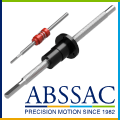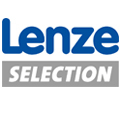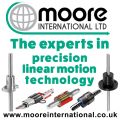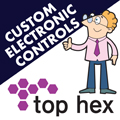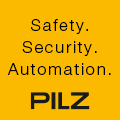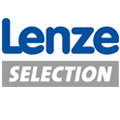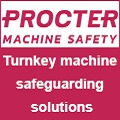
Posted to News on 21st Jul 2008, 21:21
Jetter launches JX3 controllers and expansion modules
Jetter is launching the second generation of its JetWeb Ethernet-based automation control technology. With JX3, Jetter is presenting a completely new series of controllers and expansion modules. The JX3 series includes controllers with outstanding scalability, modularity and simple handling. All three controllers have the same size and design and are programmed with the same programming language. A number of expansion modules for digital and analogue signal processing, as well as for processing temperature signals, are also part of this new automation system. The concept features one characteristic theme - the integration of all automation functions in one system, with only one programming language.

Machine designers are constantly faced with growing demands. Production processes are becoming more complex and faster, the number of versions is increasing, innovation cycles are becoming shorter and the number of competitors is rising. This is also a challenge for control technology. To meet the needs of their customers, machine builders therefore have to achieve the following:
- Guaranteed process reliability despite increasing complexity
- Higher performance
- Scaleable systems for modular machines
- Compact controllers for increasingly compact machines
- Handling of complex data structures
- Convenient handling during programming and service
Suitable technologies to meet these requirements are:
- Uncompromising integration of all automation functions
- High-level language-based programming with multitasking
- Consistent use of IT technologies
The more complex a machine, the more different systems, software tools and programming languages the user has to deal with. This requires a great deal of time and money, which can be saved if an automation system combines as many functions as possible. This is a central feature of the JetWeb technology. In practical terms this means:
- One controller for control functions, point-to-point positioning, technology functions and path control
- One programming language for PLC, positioning and path control
- One drive controller for all conventional electric motor versions
- One end-to-end communication medium for controller, drive controller and remote I/O
- Scaleable CPU performance of the controller with identical general design
High-level language-based programming
Jetter controllers are programmed with the JetSym STX language that is based on structured text. Structured text provides the functions of a high-level language and is therefore suitable for meeting the increasing need for software for process description and data management. In the control technology sector, awareness is currently growing that only high-level languages are able to meet modern-day demands made of control and drive systems.
Years ago Jetter made the decision to develop its plain text high-level language with multitasking further in the direction of structured text. In the meantime, JetSym STX is now available as a language with the following features:
- Syntax of structured text (ST), also taking other high-level languages into account
- Flexible software creation with more options than classic controller programming
- Optimum support of process programming
- Process-oriented with multitasking
- Programming updates at runtime
- Structured handling of errors and exceptions
- String commands
- Arithmetic commands
- File commands
- Modular program design
- Event handling
- Powerful debugging tools with breakpoints, trace and single step
- Three controllers - one technology
Three controllers
The JetControl 340, 350 and 360 controllers have exactly the same size with a module width of 50mm. The corresponding expansion modules have a width of 25mm. The series is supplemented by two bus modules for further distribution. An Ethernet bus module is available for connection to Ethernet networks. This features a two-port switch, enabling both the configuration of star network structures and also links to a line network. The IP address is assigned either statically with a DIP switch on the backplane or dynamically, for example with DHCP. The module enables synchronous communication between the controllers of the JetControl series and the decentralized I/O station via Ethernet.
The CAN bus module JX3-BN-CAN serves as a bridge to the previous JetControl 24x and JetControl 647 controllers. These use the CAN-bus as a system bus interface. As a result, the new system can be integrated into both Ethernet networks as well as existing system bus structures with the existing controllers.
The low-cost JetControl 340 entry-level model controls up to three axes, while the more powerful JetControl-350 model can control up to eight axes and the JetControl 360 high-end controller offers integrated path control, and can control up to 64 axes. None of the systems has a sum limitation on the digital inputs and outputs due to the decentralized expansion option with the Ethernet bus module.
Scalability
Jetter says the controllers can be optimally scaled due to their identical design and software compatibility. If a machine engineer builds machines of different expansion stages and sizes, migration between these three controllers is no problem. During hardware planning, practically no changes are necessary due to the identical design. All three controllers are programmed with the same software and programming language. This has considerable advantages in different situations:
- If the functions of a machine are developed further
- If machines are offered in different performance classes (eg with either pneumatic components or servo-drives)
- When new machine types are developed that overlap considerably with existing machines
- When high performance is required
Networking
The central communication medium is Ethernet TCP/IP. The new controllers and the Ethernet bus node each have two Ethernet ports with their integrated switch. This enables the configuration of line topologies. In addition, the second port offers the option of programming and diagnosing the controller at runtime while it is in the control network. The controllers also feature a serial interface and a CAN interface. An SD card slot is available as standard for the JetControl 350 and 360 and as an option for the JetControl 340. Data can be exchanged and software updated with the SD card.
Expansion modules
The JX3 system offers various digital input and output modules. Analogue modules and temperature modules are available for process and measuring applications:
- Analogue input module with four analogue inputs
- Analogue output module with four analogue outputs
- Temperature module for the connection of two analogue temperature sensors (Pt100-/Pt1000 sensors)
- Temperature module for the connection of two thermocouples type J, K, B, E, N, R, S and T
Additional modules, such as a counter, are currently being developed. Eight expansion modules can be connected to one bus head, either CAN or Ethernet, and up to sixteen modules can be connected by means of a power supply module. Therefore I/O stations with up to 256 digital input and output channels can be configured.
Simple installation
Installation of the JX3-I/O modules is claimed to be very simple. Each expansion module has its own backplane that is simply snapped onto the top-hat rail. Replacing modules is easy, as the module housing only has to be released from the backplane. Plug terminals permit prefabrication of wiring harnesses with different connections: tension spring and spring connections allow tool-free connections to be made. The expansion modules are colour-coded; this means that there are also defined colours for certain functions. This prevents confusion in the electrical cabinet and the machine.
Diagnostics
The JX3 system has a number of diagnostic options. The following can be monitored:
- Controller communication
- Communication with the bus head
- The operating system/firmware version
- The number of connected modules
- The status of connected modules
- The supply voltage
- Sensor and actuator voltage
- The single channel diagnosis of the outputs in the event of a short circuit
- The electronic rating plate (serial number and hardware version)
Users therefore have a comprehensive range of diagnostic options at their disposal, which can also be accessed remotely. Networking with Ethernet ensures full access to all controllers and bus nodes in the network.
Additional functions
The individual modules offer a complete range of additional functions, two of which are described below as an example. The I/O module has the following functions:
- Pulse stretching
- Digital filters
- Pulse width modulation
- Configurable error statuses of the outputs
- Outputs can also be used as inputs
The expansion modules for processing analogue signals have the functions averaging, user scaling, upper/lower limit monitoring, drag indicator as well as an oscilloscope function.
Conclusion
The new JX3 system is compact and powerful. Not only are the scalability and modularity very attractive, but so too is the concept of full integration of automation functions and the JetSym STX programming language. Combined with the options of the integrated IT functions and networking with Ethernet, the JX3 series offers machine and plant engineers a sustainable automation control system for the challenges of today and the future.
For more information on the JetControl 3xx controllers, go to www.jetter.de/240.0.html?&L=5.




